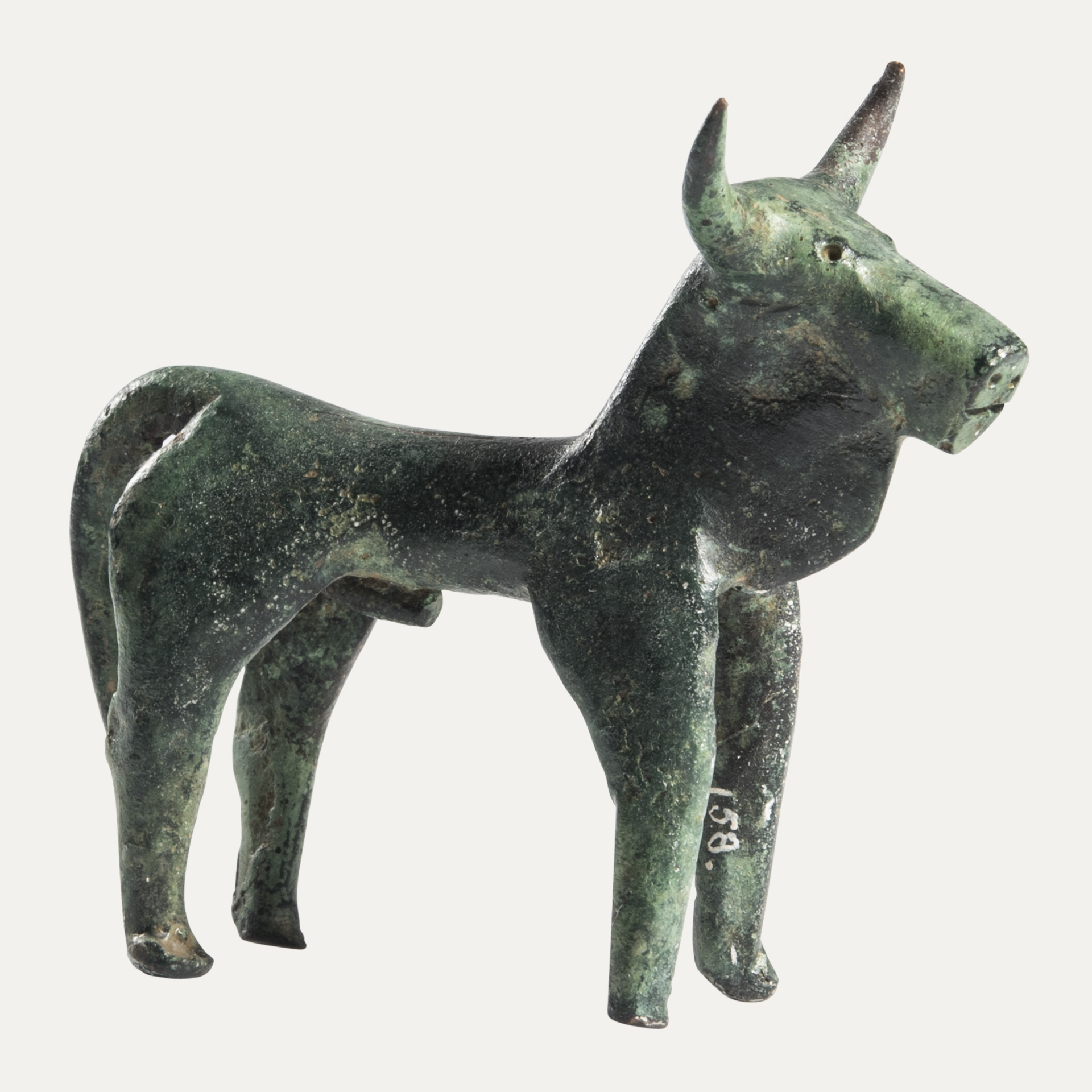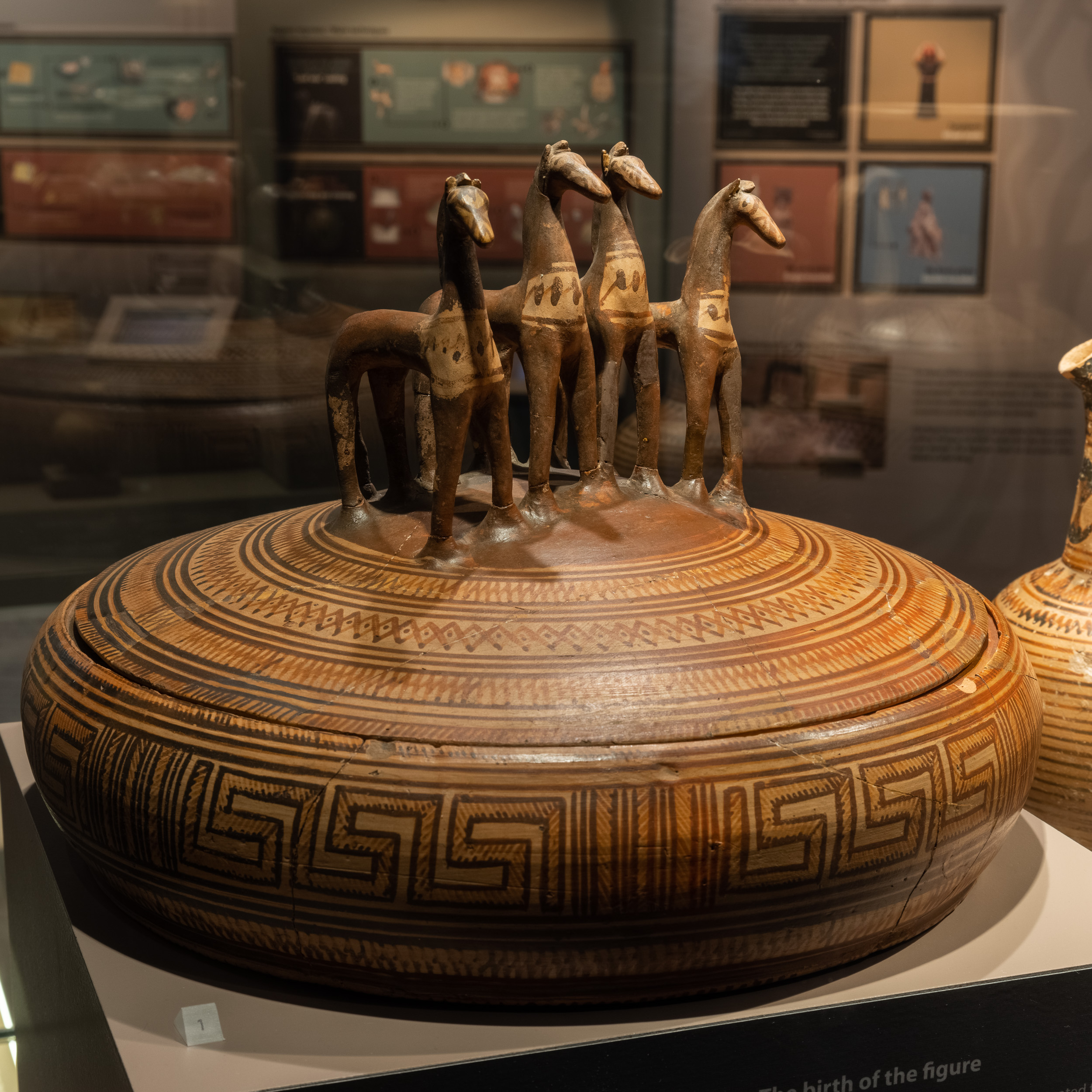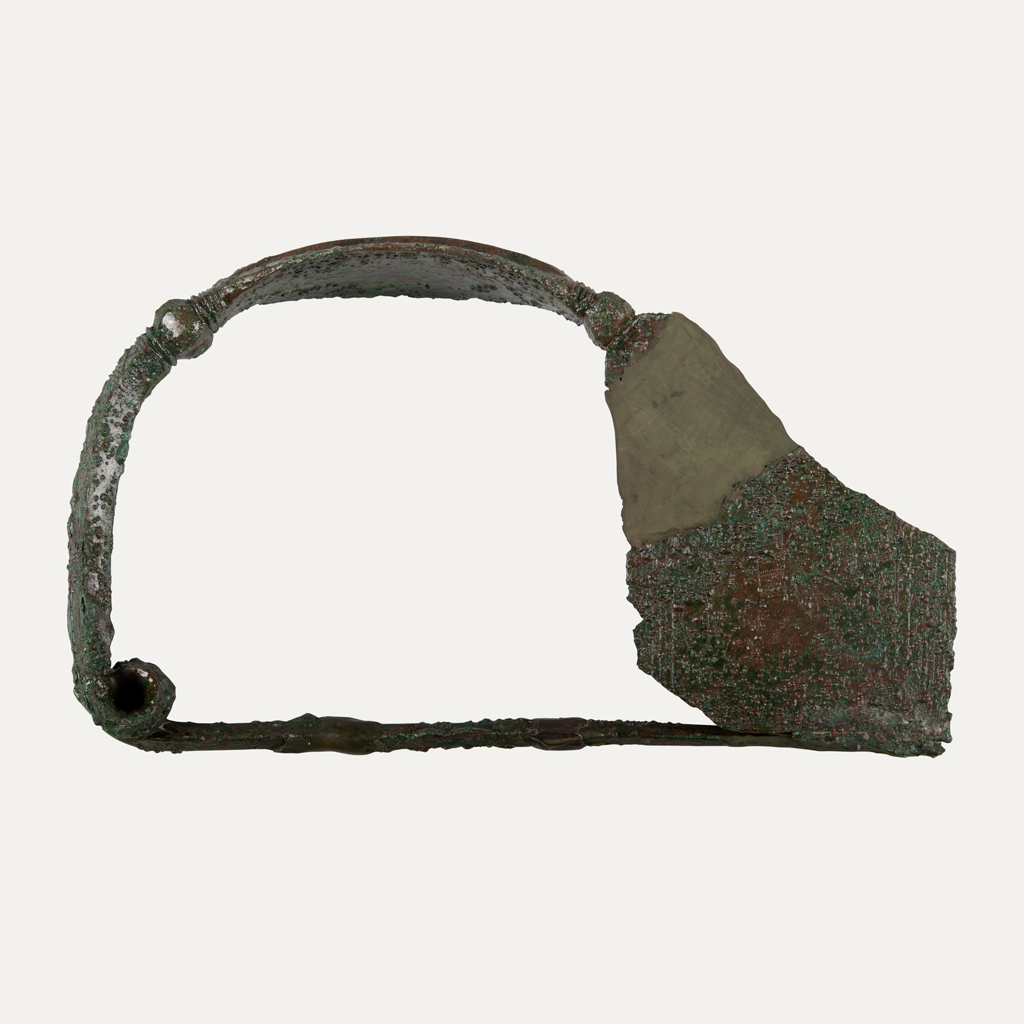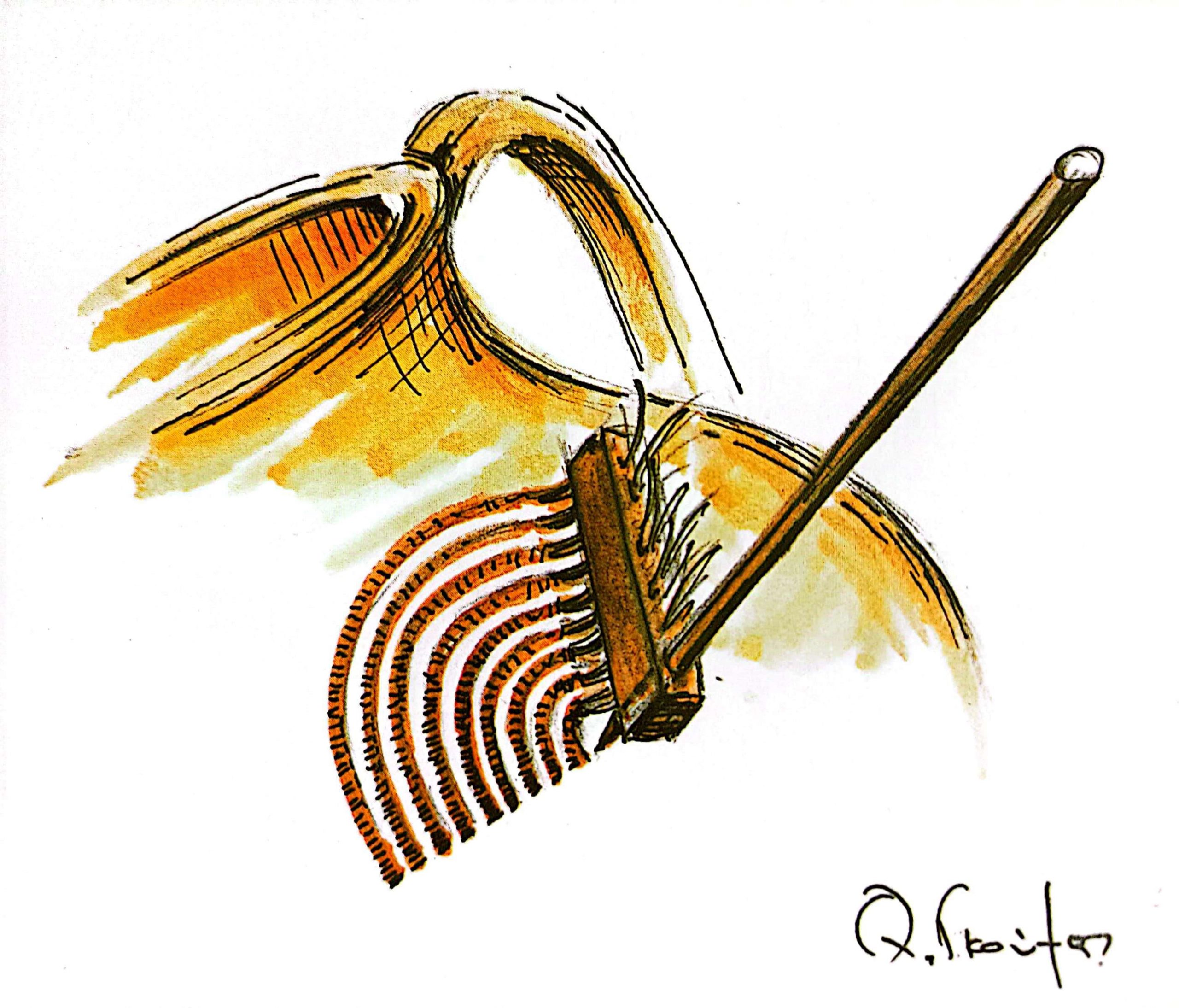Geometric Art
ANCIENT GREEK ART
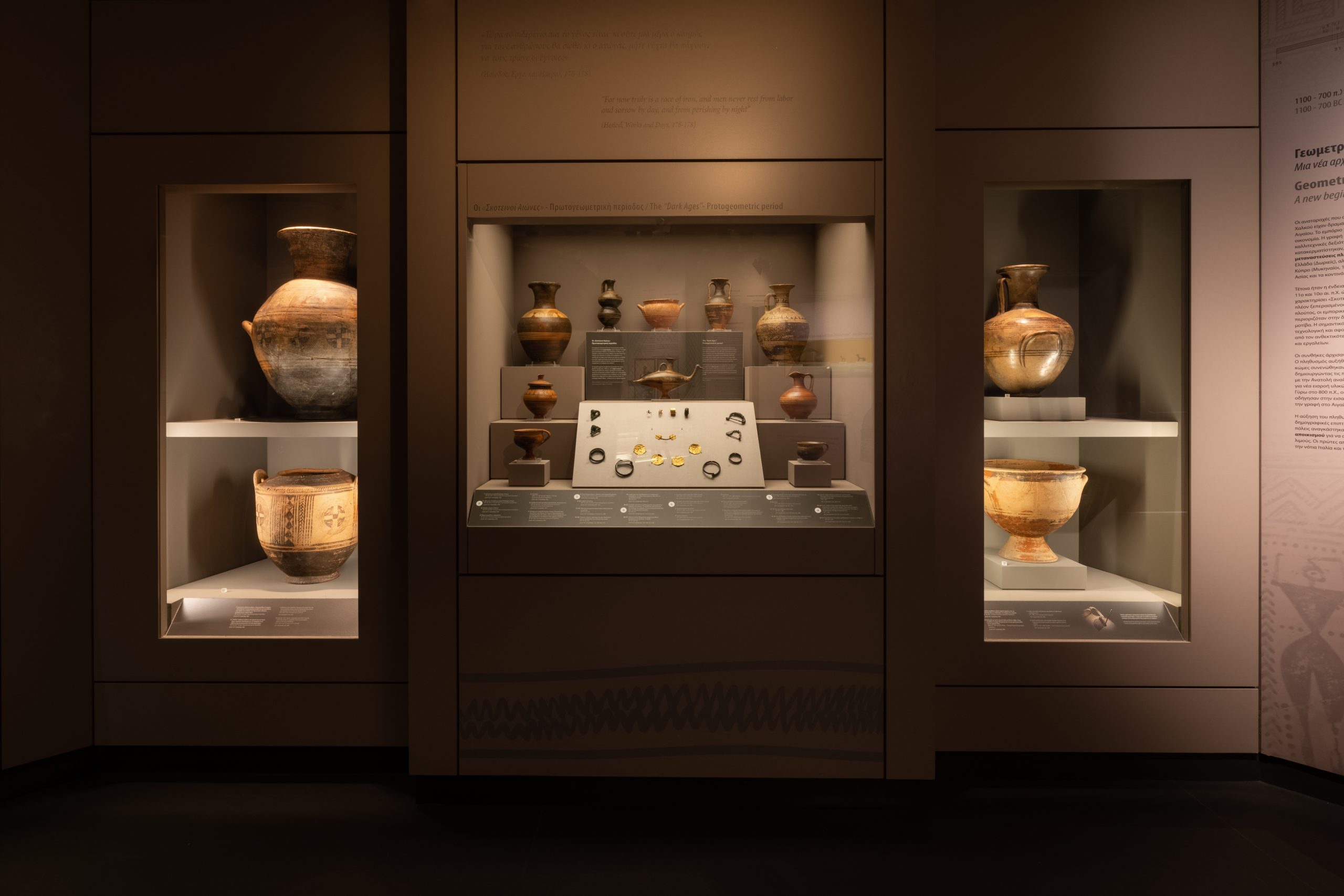
A NEW BEGINNING
Following the collapse of Mycenaean civilization at the end of 13th c. BC, the most sophisticated artistic skills from the Aegean were lost. The monumental architecture, painting, seal-engraving, ivory-carving, and advanced techniques of metal- and stone-working, along with the palaces, were gone.
Some last glimpses of the Mycenaean splendour survived into the 12th c. BC, but, for most of the next four centuries (11th – 8th centuries BC), artistic expression and craftsmanship were limited to the manufacture of small figurines, bronze vessels, and a rather restricted range of bronze and gold ornaments. Pottery was the only type of artifact that continued to be produced in large quantities. However, the vases were mostly decorated with plain geometric motifs, a style that lent its name to the whole period.
ART OF THE GEOMETRIC PERIOD
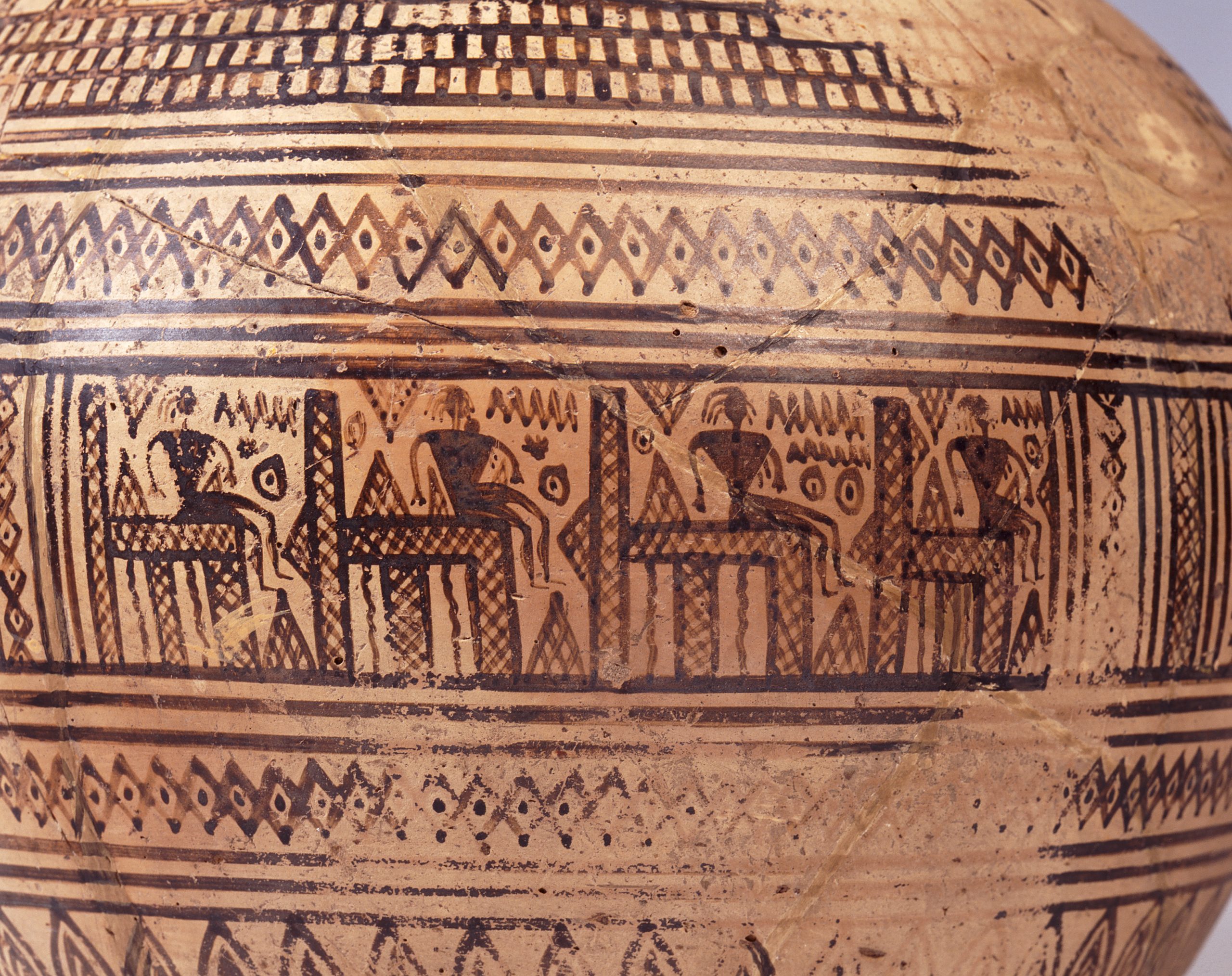
Geometric art is mainly found in cemeteries and, to a much lesser extent, in cult places and settlements. In the Early Iron Age, there was a great concern with religion and death, and most artifacts were created to serve as symbolic offerings in sanctuaries and graves. This may explain, in part, the persistence of traditional styles, as well as an overall reluctance for innovation. Emphasis was placed on the precise reproduction of form, and decoration was confined to the repetition of meticulously executed linear motifs, which help enhance the sense of symmetry. With the exception of figurines, no interest in representational art was present in Greece until the middle of the 9th c. BC.
When figural scenes do appear from c. 850 BC onwards – most probably as a result of increasing contacts with the Near East – they are rendered in a highly schematic style, with an awkward sense of three-dimensional space. Nevertheless, these scenes represent the earliest systematic attempts to depict humans in action, forming the basis of a long tradition of narrative in Greek art.
FIGURINES
Geometric figurines were mostly made of bronze and clay, and only occasionally have archaeologists found examples in stone or ivory (the latter found mainly on Crete). Geometric figurines are highly schematic and created without interest in the realistic representation of the body.
The artists seem to have followed standard conventions in the carving of each anatomical part: round heads and roughly triangular torsos for humans; cylindrical bodies and noses, flat necks, and triangular shapes for animals.
Bronze figurines represented both humans and animals and were small in size and solidly cast (although details were often rendered by hammering). They were either sculpted in the round or attached to the handles of large bronze vessels (mainly tripod cauldrons).
The most common human figures depicted warriors and charioteers, but standing females, as well as male deities and mythological creatures (Minotaur, Centaur, etc.), were depicted as well. Animal figurines from this period mainly represent horses, bovines, and birds.
Clay figurines share a similar range of types and are mostly hand-made and solid – although wheel-made examples with hollow interiors have also been found. In some cases, model horses were attached to the lids of large clay pyxides of the Late Geometric period, usually found in aristocratic graves.
Additionally, some geometric vases were found in the form of birds or animals, and clay figurines were decorated like pottery, with either geometric motifs or a black glaze.
JEWELLERY
The most common bronze types are pins and fibulae (brooches), which were used for fastening loose garments, such as the peplos on the shoulder. There are several variants some of which exhibit Balkan or even central European influences.
The so-called “Boeotian” (or “Attico-Boeotian”) fibula (an oversized type of brooch with large rectangular catch-plate), which was decorated by incision with either geometric motifs or figured scenes (sometimes drawing from mythology), is of particular interest. Such fibulae were exclusively used as votive offerings in sanctuaries and graves.
Gold-working techniques
Gold ornaments are even rarer, but the few that have been found indicate an understanding of sophisticated techniques, such as granulation and filigree. In the Aegean, those techniques (which are of Near Eastern origin) were widely used in the Mycenaean period and may have survived the Dark Ages in certain areas (like Euboea, for example). Necklaces, rings, and earrings have been found in Geometric graves, but the most common types of gold jewellery in this period are bands and diadems made of thin sheets of metal. Gold bands were often decorated by incision or in the repoussé technique initially with geometric motifs and later with animal friezes. In the late 7th c. BC, more complex scenes appeared, including battles, chariots and charioteers, dancers, and mythological creatures such as Sphinxes and Centaurs.
METAL OBJECTS AND VESSELS
Weapons and tools in the Geometric period were mainly made of iron (a newly introduced material that was much more durable than bronze). Only a few examples survive, but they include a wide range of types: swords, spearheads, daggers, knives, spits, firedogs, awls, etc. Defensive armaments, like helmets, shields, and armours continued to be made of bronze, a material that was easier to hammer, allowing smiths to more easily achieve the desired shape.
Smiths from the Geometric period created bronze vessels that were used as votives in sanctuaries or as offerings in the graves of aristocrats. The large tripod cauldron was the most common type, though bowls of all sizes and forms and even votive-shields were also found. Metal vessels –particularly bows –were frequently decorated in the repoussé technique with floral motifs or figured scenes, clearly of Near Eastern inspiration.
POTTERY
In the Proto-Geometric period (1025 – 900 BC), the pre-existing ceramic repertoire was radically transformed to fit new needs and customs in Greece. New shapes – such as the amphora, the footed bowl, the krater, and the oinochoe – rose in popularity.
However, decoration was restricted to concentric circles and semicircles (painted with multiple brushes), lozenges, zigzags, and other plain geometric motifs, which were arranged in wide bands on the neck or belly of the vase.
In the Early Geometric period (900 – 850 BC), rectilinear motifs (e.g. meanders) largely replaced circular ones and were now enclosed in narrow bands or panels placed on the neck and belly; the rest of the surface was covered in high-quality black gloss. This new and impressive decorative manner was meant to distinguish the various parts of the vase and emphasize its overall structure.
While a similar decorative system was used in the Middle Geometric period (850 – 760 BC), broader bands were also implemented, covering larger parts of the vase. The correspondence between shape and decoration became even more intimate with reserved bands and framed meanders that emphasised the neck of the vase (or the space between the handles). In this period, figural decoration made its hesitant appearance: single animals and birds were painted in outline and placed on side-panels and narrow friezes.
The first figurative representations
In the Late Geometric period (760 – 700 BC), the decoration of clay vessels was revolutionized. Rectilinear motifs continued to be used, but they now had a complementary function: figured scenes depicting funerals, land and naval battles, chariot processions, and even mythological events. The new style was invented and developed in Athens by the so-called “Dipylon Master”, and his workshop produced richly decorated oversized vases (kraters, amphorae), which were used as markers in the graves of aristocrats.
Composite scenes (with many participants) were painted in successive bands and friezes that, over time, gained more space than the geometric motifs. Figures were rendered in a schematic manner: the lower body was in profile, while the chest and arms were frontal. The artists even made an effort to represent the third dimension, so figures on the foreground were painted larger and placed on a lower level, while those meant to be on the background were painted smaller and placed on a higher level.
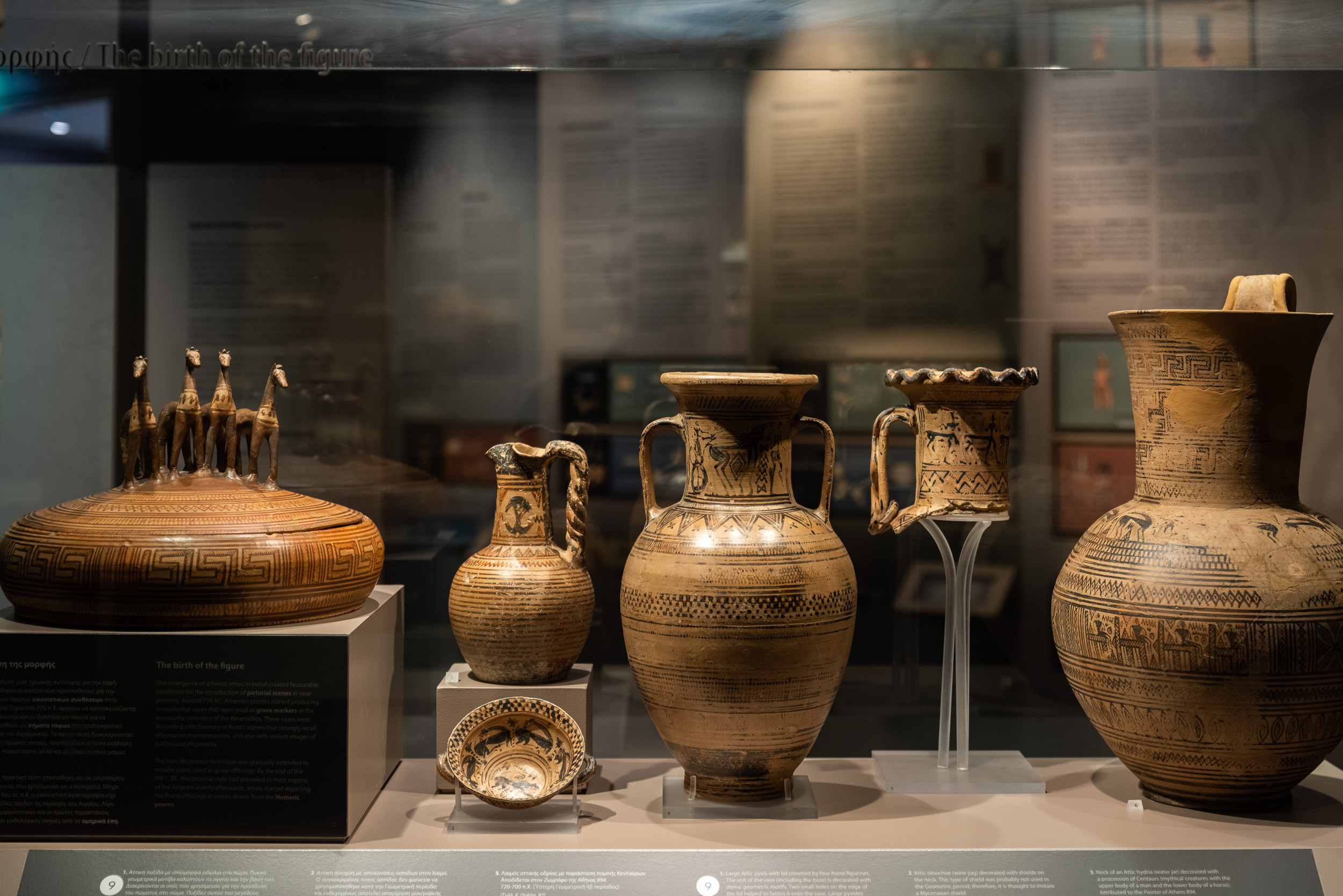
The Dipylon workshop introduced the human form to vase-painting, establishing a tradition of narrative that would prominently exist for many centuries in Greek art.
Several artists in Athens and other parts of Greece (like Corinth, the Argolid, Euboea, and the Cyclades) followed this tradition. But, by the end of the 8th c. BC, the Geometric style had reached its limit and was soon replaced by a new technique: black-figure, which allowed for more freedom and accuracy in the rendering of figures.


